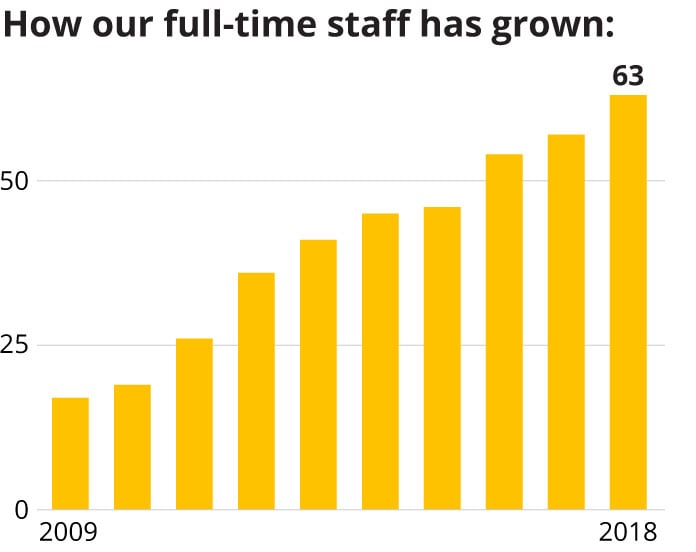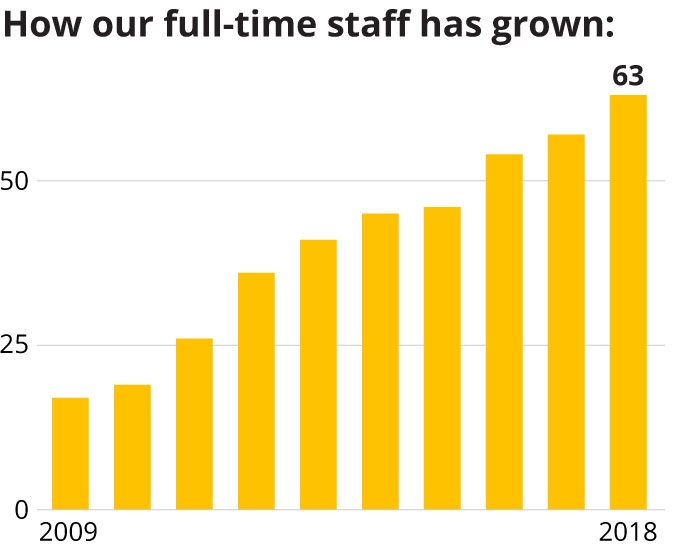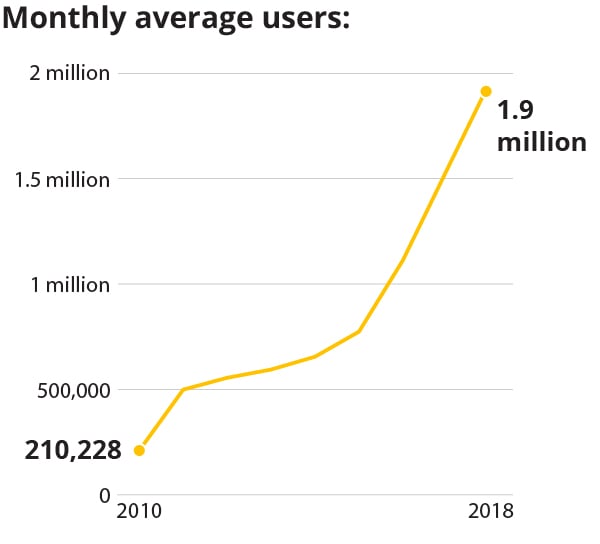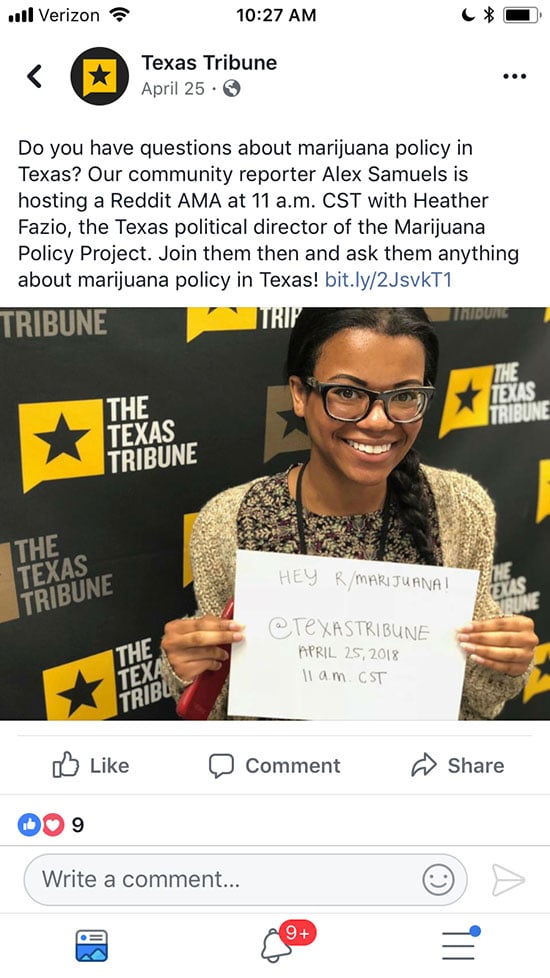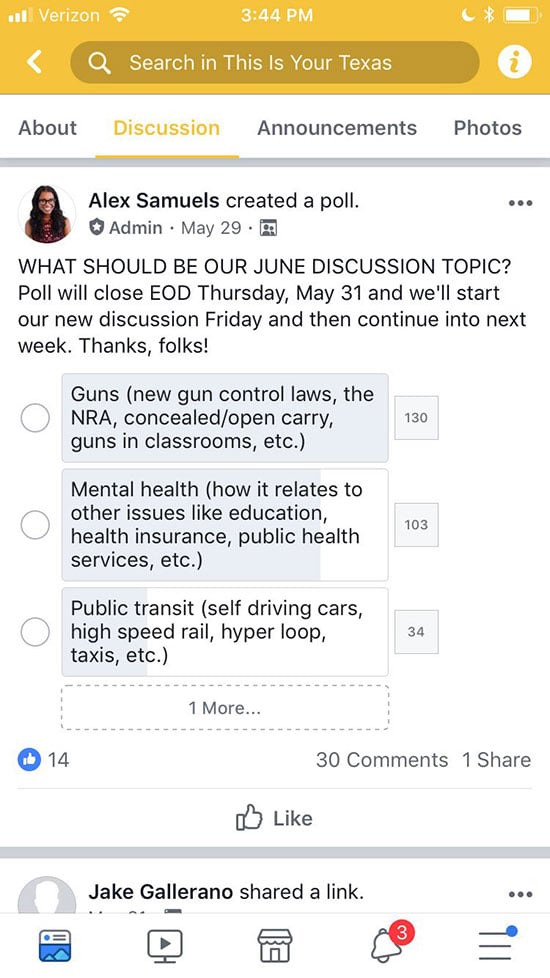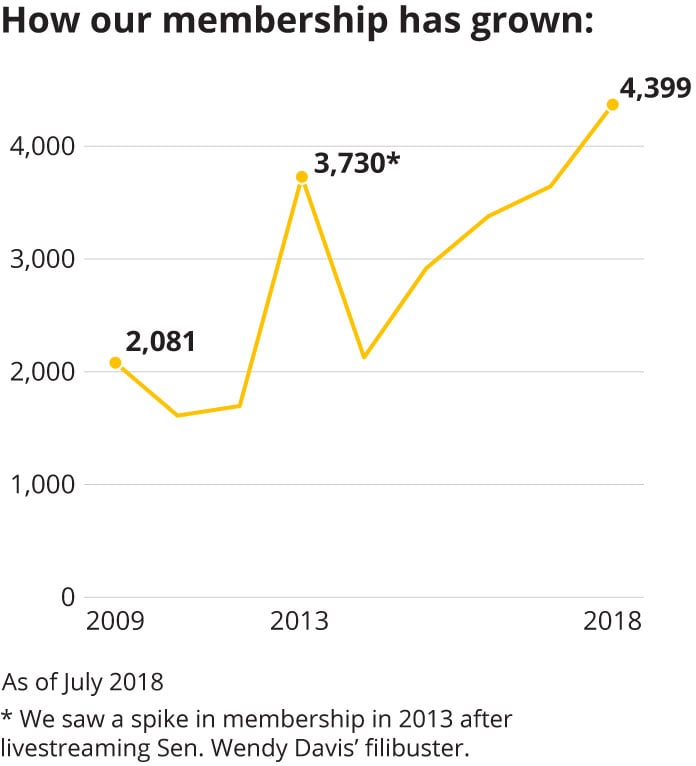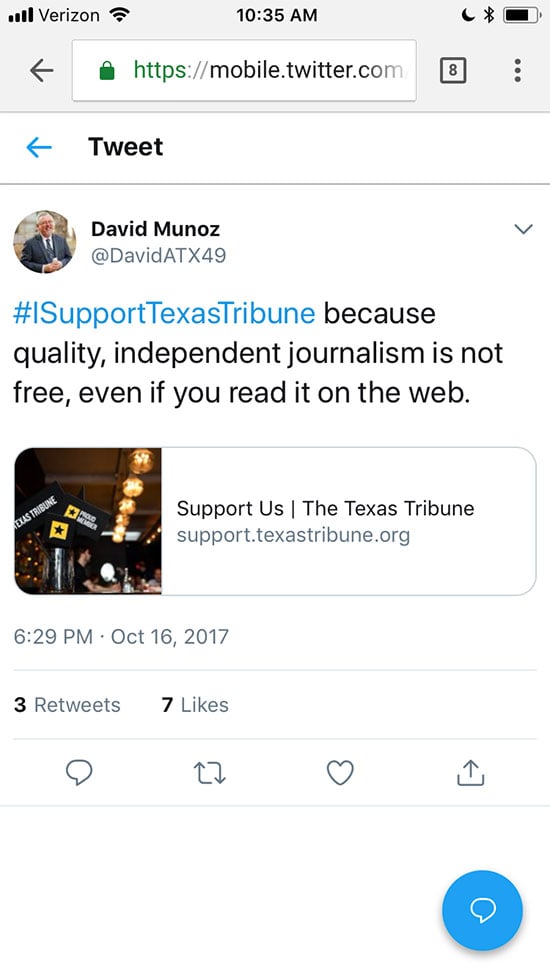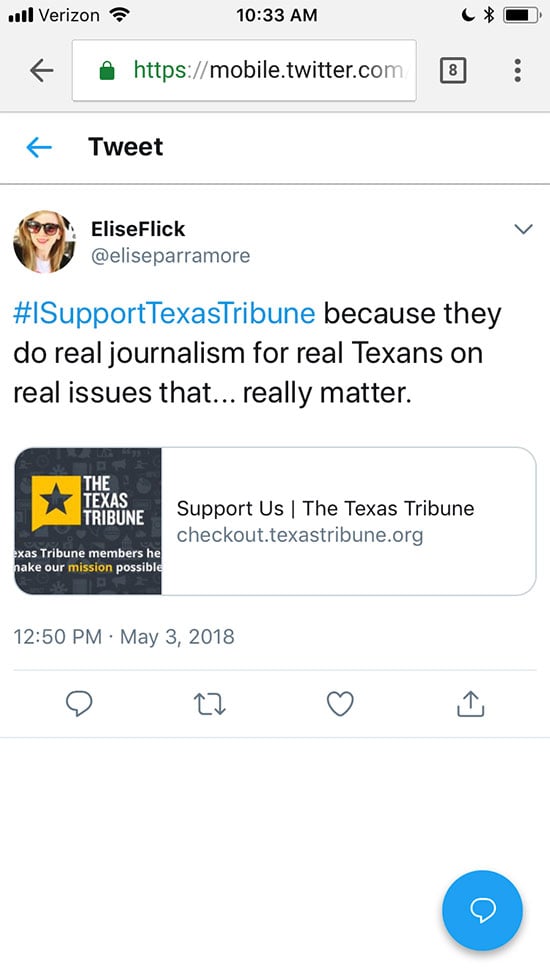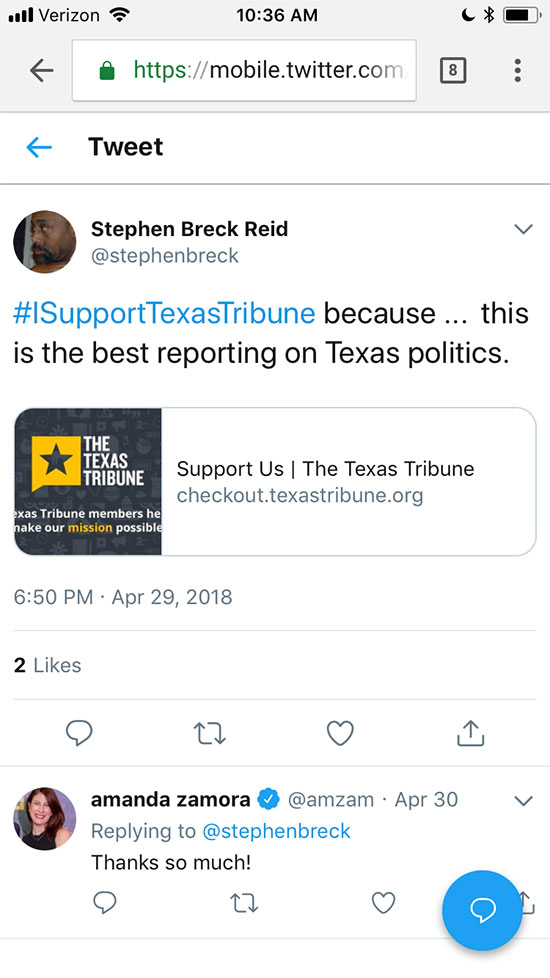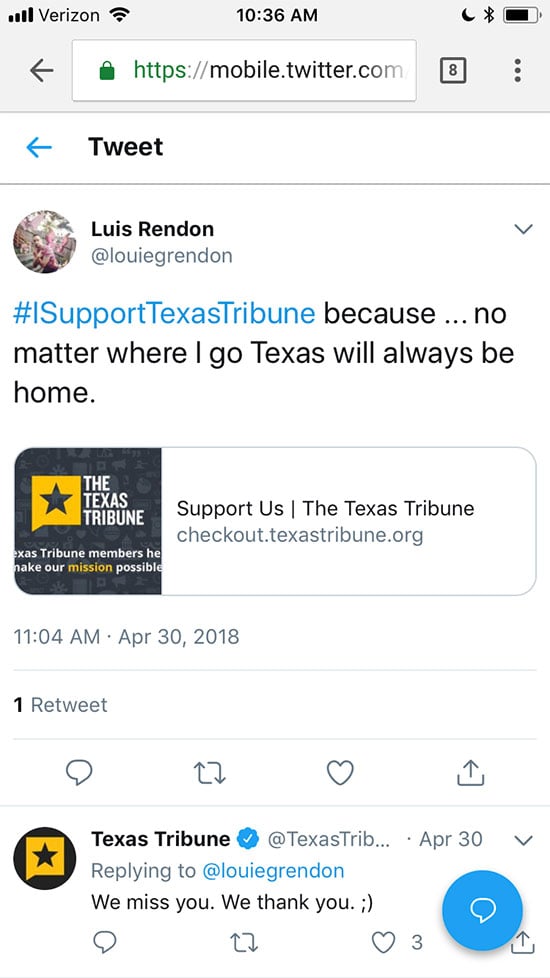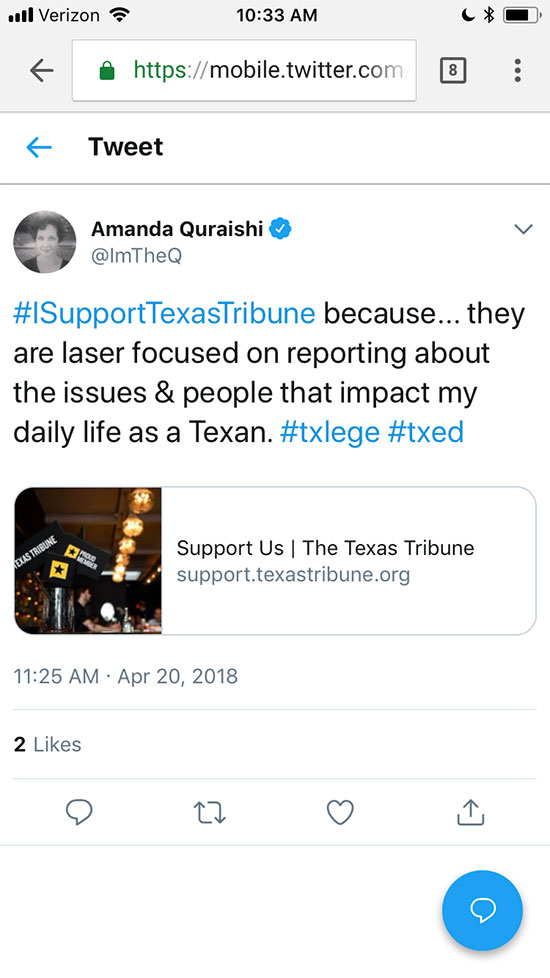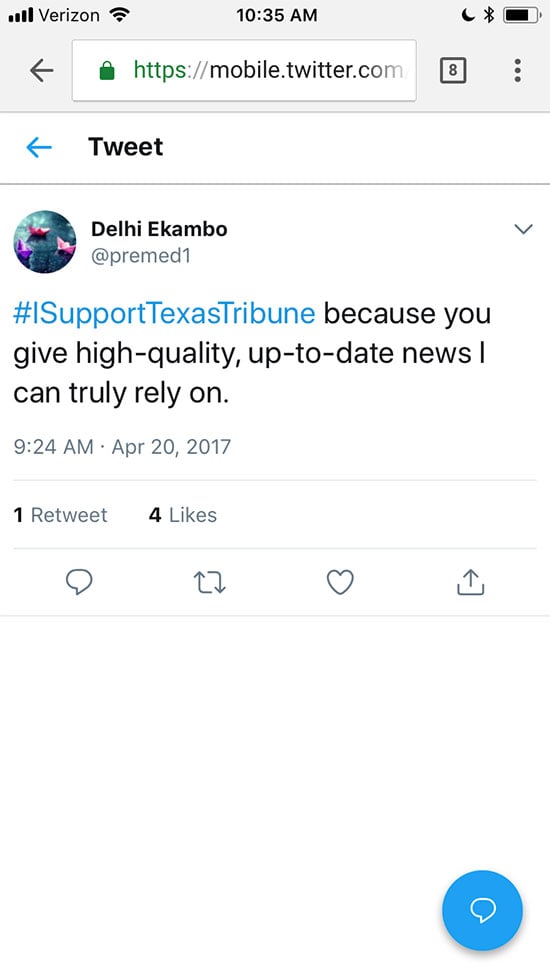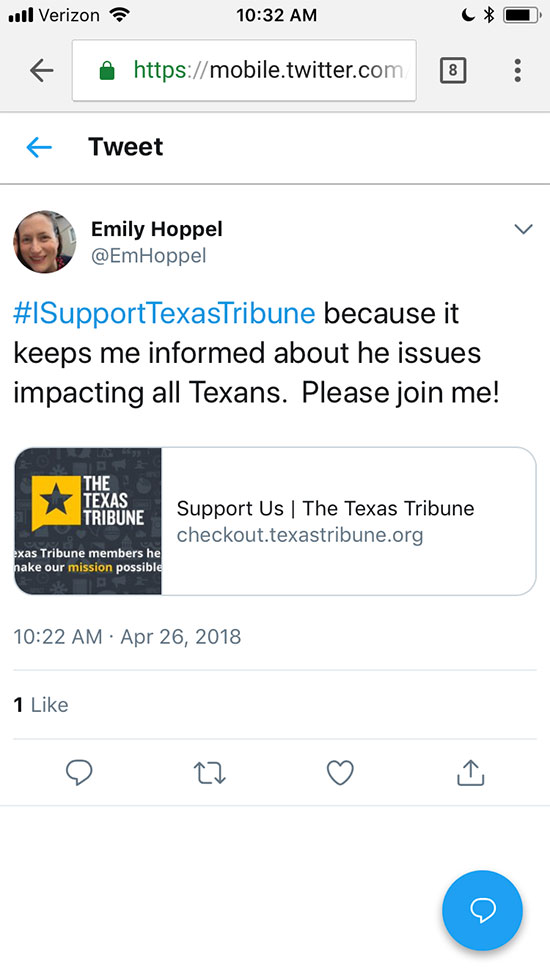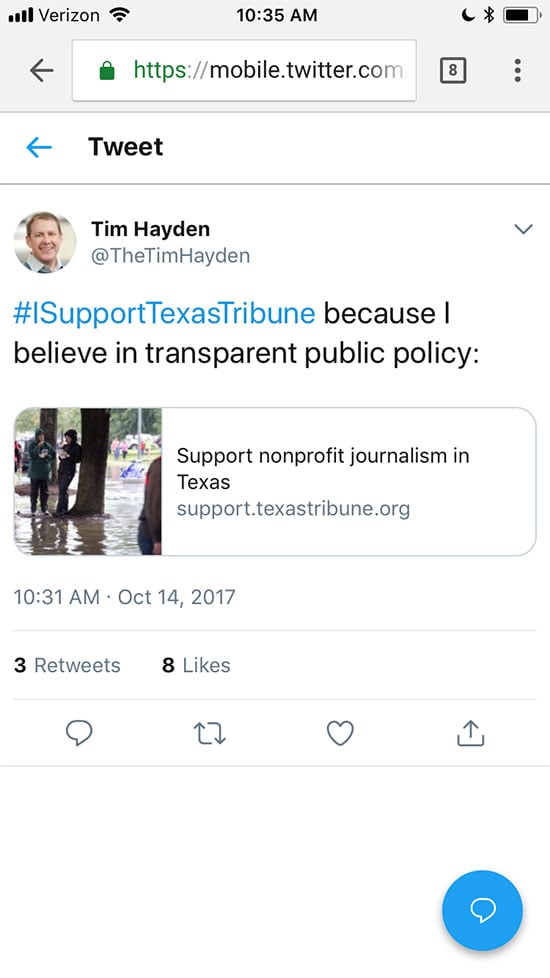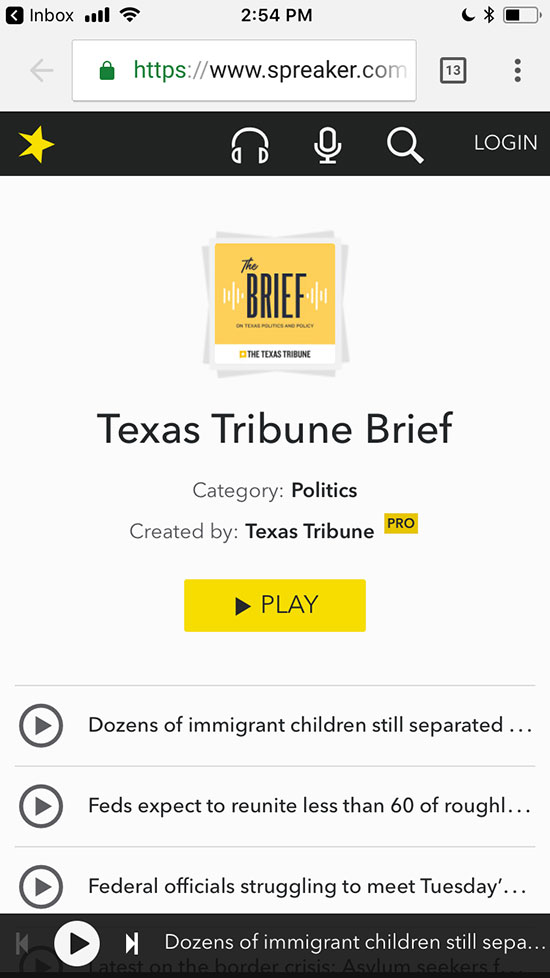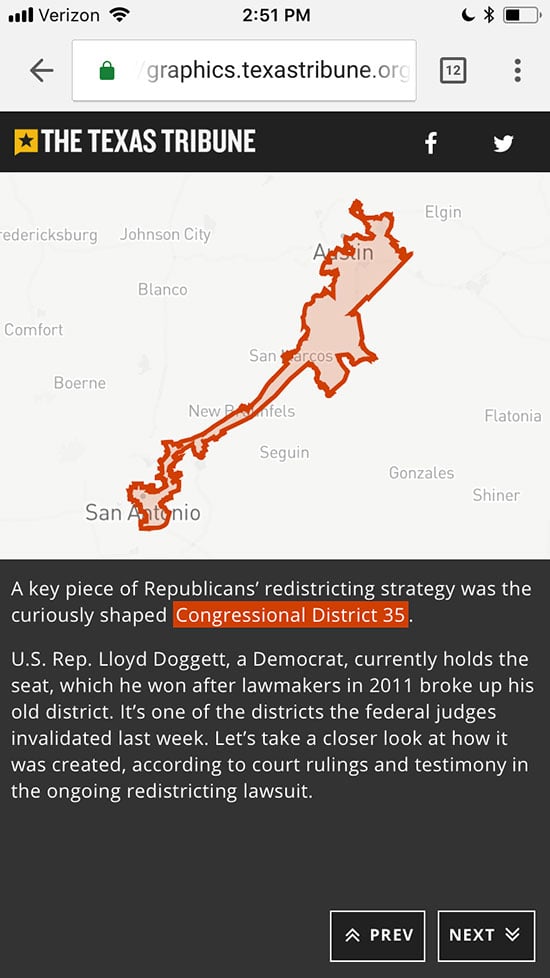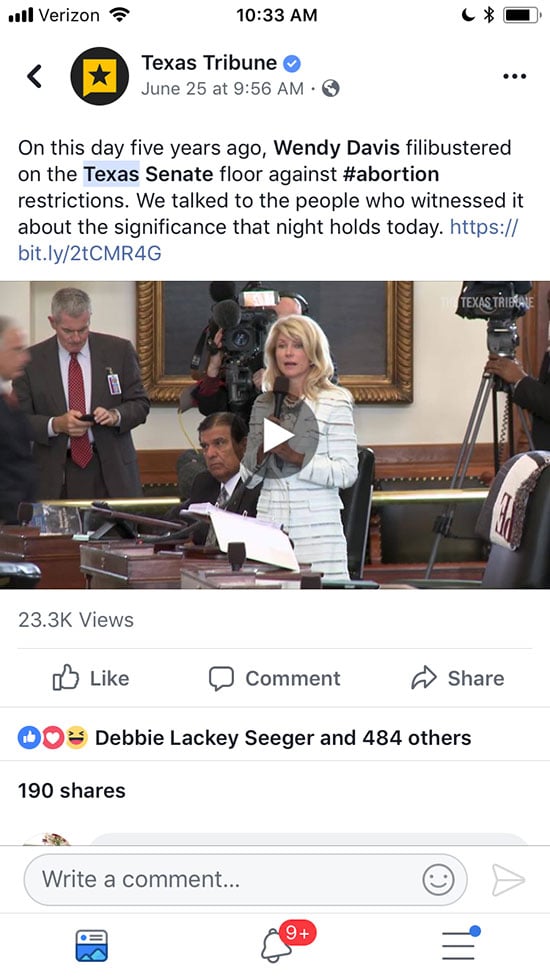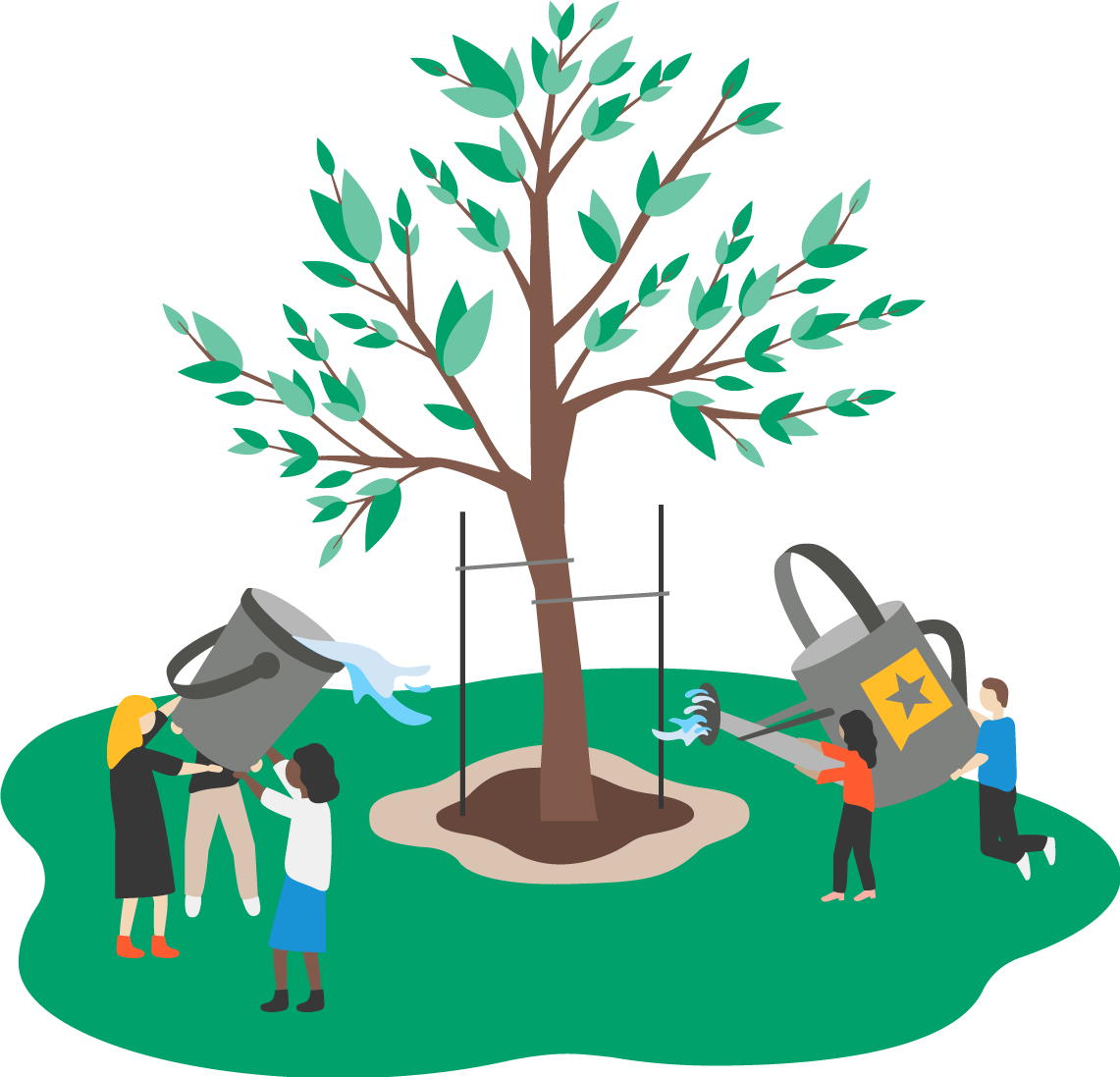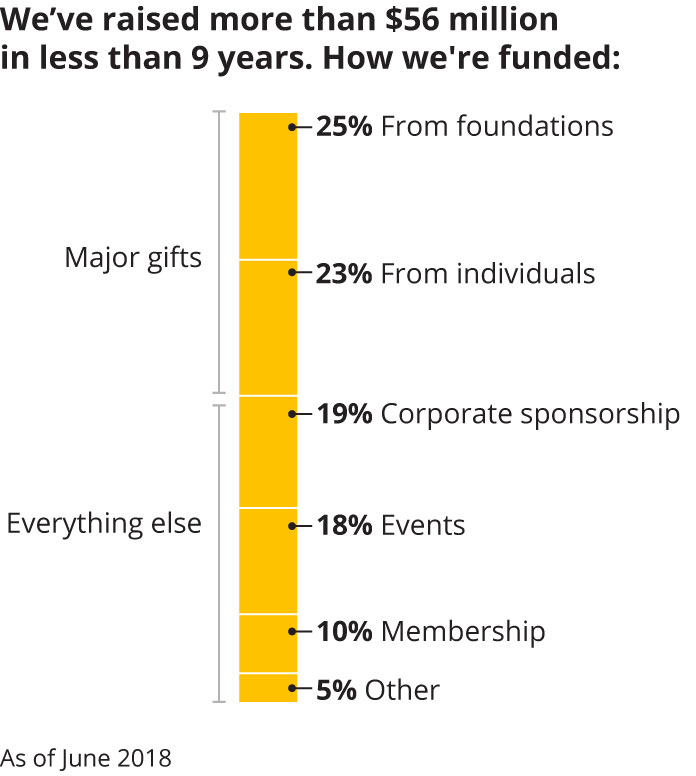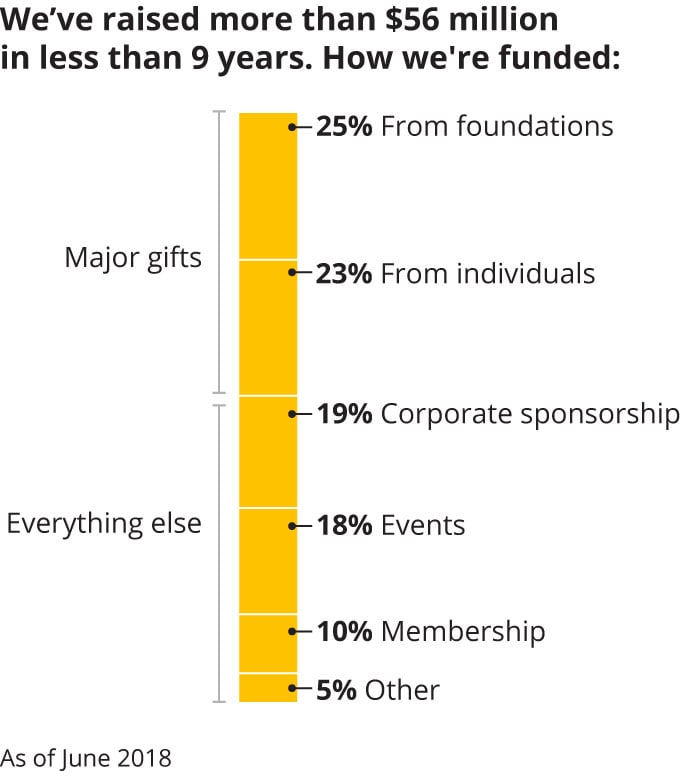A strategic vision for The Texas Tribune’s future

If Texas is the center of the universe, as lore and myth would have us believe, The Texas Tribune is the center of Texas. We operate in the literal center of the state — smack dab in the middle of the map — and sit in the existential center of the action.
Powerful Texans, from the most consequential elected and appointed officials to the informal influencers who pull the strings and grease the skids, read or otherwise interact with the Tribune multiple times a day. Issue activists, community organizers and other impassioned types look to the Trib for insight and perspective that inspires their work. An ever-larger number of people get context and clarity from us on matters that directly affect them and their families, friends and neighbors each day.
Here and elsewhere, for anyone who cares about politics and public policy, we are the first and most important read — a trusted source of news and information worthy of our beloved home.
We were exuberantly ambitious in 2009 when, in response to the decline in coverage of matters of statewide concern, we launched the Tribune to address unmet demand with ample, reliable supply. Our bold vision for enabling serious journalism turned on our embrace of the nonprofit business model. Like our public media peers, we would raise money from our stakeholders: the individuals, foundations and corporations that shared our commitment to civic health and purpose.
Just as critical was our unwavering promise to run a nonpartisan newsroom without fear or favor. We vowed to be fair, thorough and accurate in everything we produced, posted and published. No editorializing on issues. No endorsements of candidates or campaigns. Compulsive disclosure of the sources of our funding, requiring ourselves to clear the same high bar we put before those we covered. No real or perceived thumbs on the scale. An outpost of civility, credibility and transparency in the United States of Confirmation Bias.
The call for a startup of this sort was undeniable. In Texas, even our news is bigger.
- We have the most residents without health insurance of any state in
the country.[1] - We have the most contiguous miles with the
Mexican border.[2] - We produce the most
crude oil.[3] - We have the second-highest public and higher
education enrollment.[4] - We have more people
in prison.[5] - We have the 11th-largest economy in the world — or would, if Texas were once again
a nation.[6], [7] - We’re home to the most big cities of any state — six of the top 20 — and some of the fastest-growing big cities, small cities, suburbs and counties in the
United States.[7] - And our population is not only growing quickly — an estimated 55 million by 2050, nearly double what it is today — it’s also changing dynamically. In the next generation, Texas will be majority Hispanic, with all the accompanying opportunities
and challenges.[8]
There is no better time to be doing this work and no better place to do it. The stakes are mountain-high. The issues in play are getting more complex. The need for explanatory journalism, for investigative journalism and for the watchdog reporting that holds public officials and institutions accountable has never been greater.

Investigative reporter Neena Satija interviews a Guatemalan migrant whose wife and four children were separated at the Texas-Mexico border. Photo by Reynaldo Leal for The Texas Tribune.

Multimedia reporter Alana Rocha interviews House Speaker Joe Straus on his decision not to seek re-election. Photo by Bob Daemmrich Photography for The Texas Tribune.
With Texas’ abysmal voter turnout only one of many measures of the state’s flagging engagement, we enthusiastically reaffirm each day our mission to motivate civic participation through civic education. We’ve always said — and continue to believe — that a smarter Texas is a better Texas.
For going on nine years, all of us at the Tribune have been optimistic but realistic. We’ve made extraordinary strides, but we’ve struggled at times to execute precisely or perfectly on our best intentions. Pure hearts, sweat and toil are necessary but insufficient ingredients. There is more work to be done.
In a state that proudly proclaims its exceptionalism at every turn, The Texas Tribune is well on its way to becoming an exceptional news organization. It is not there yet. We are succeeding but have not yet succeeded. The path ahead is well lit but uncertain, which is why we undertook the many months of deliberation and debate that resulted in the plan that follows: a strategic roadmap to a stable, sustainable future.
That roadmap begins with our mission. Our editorial north star remains unchanged: to produce original journalism of consequence on politics and public policy in Texas, in service to the state’s diverse population. But to best serve Texas, The Texas Tribune must grow with Texas. To that end, by 2025 we aim to:
Double and Diversify
Make Membership Our Mantra
Put the Tech Back in Texas Tribune
Rev Up Revenue
The greatest danger in our industry is complacency. We need to dig deep for the pioneering and plucky spirit that drove The Texas Tribune on day one. Nearly nine years in, it’s time for us to get a little uncomfortable again.
Since its launch, The Texas Tribune has grown from a niche publication favored by legislators and lobbyists to the state’s authoritative source on Texas politics and policy. Our website currently attracts an average of more than 1.9 million people each month — nearly eight times higher than in 2010 — and thousands of others consume our journalism in their local newspapers, on their local newscasts, through social media and at the Tribune’s statewide events.
Yet the bulk of this growth has been organic — not rooted in a deliberate study of who our audience is and how it interacts with our content, let alone whom we optimally hope to reach. And our core readers are not yet representative of the state’s fast-changing demographics, the audience that’s critical to our — and the state’s — future.
With a more purposeful and targeted approach, we believe The Texas Tribune has the ability — and more important, the moral imperative — to double its audience over the next seven years, dramatically diversifying its reach in the process.
We will do it by making smarter choices around what we cover and when we cover it, establishing a dedicated breaking news desk and devoting our beat reporters to bigger and better explanatory and investigative reporting that draws in new and nontraditional readers.
We’ll develop specific audience and editorial strategies aimed at reaching and reflecting Texas’ fastest-growing populations: young and ethnically diverse Texans.
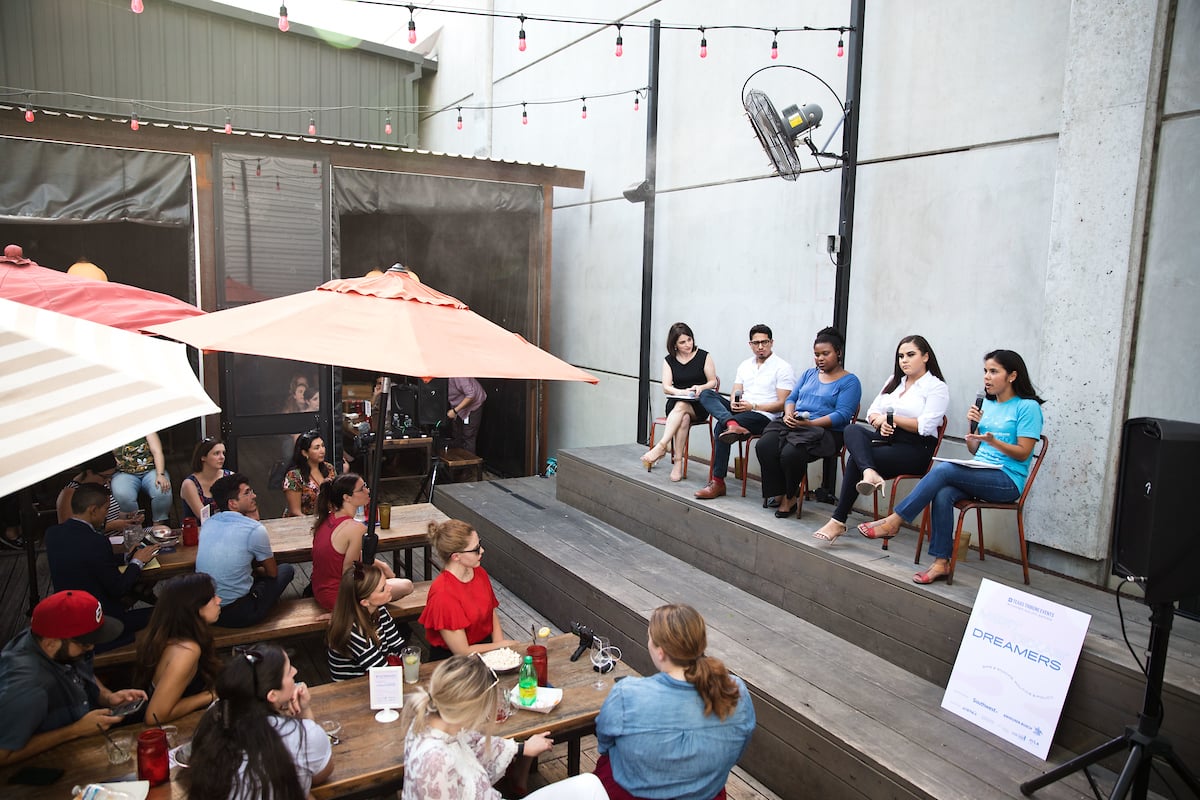
“Dreamers” share their experience of growing up undocumented during a Texas Tribune summer salon series aimed at young Texans. Photo by Callie Richmond for The Texas Tribune.
And we will seek deeper connections with urban and suburban readers, pursuing the nearly 10 percent market penetration we already have in Austin in cities like Houston, Dallas, San Antonio and El Paso by way of enhanced editorial coverage, new media partnerships and live events.
To be clear: We’re not abandoning our politics and policy insiders, the decision-makers who rely on us around the clock. If anything, we’ve given them more tools to do their jobs. Nor are we moving away from our aggressive statewide syndication model, which distributes our journalism for free to Texans across this giant state.
“If we build it, they will come” is not an audience strategy. We must prioritize our readers’ needs alongside our own. The people we’re trying to reach must be able to see themselves reflected in both our reporting and our newsroom.
To do that we will:
Take a more ground-up, community-driven approach to our journalism
Get creative with editorial, newsletter and membership-driven live events
Lean more heavily on strategic partnerships
Give our journalists both the analytics and the insights to expand the reach of their work
Make diversity and Spanish-language skills a greater priority in hiring
Guard against the shifting tides of digital platforms
Growing our Texas Tribune community — our ranks of readers, members and evangelists — isn’t just the audience team’s responsibility. Going forward, it will be part of the job description for everyone on the Tribune staff. Our journalism can only make a difference if we maximize its reach.
For years, the Tribune has measured its performance and its audience engagement through broad, conventional, site-wide metrics — everything from unique readers and pageviews to social followers and comments. While this approach helped chart our growth over time, it never told the full story of our reach and never felt like the right fit for our public service mission.
What the Tribune wants most is loyalty: to produce journalism so compelling and useful to Texans that they’re inspired to support us financially. More than 4,000 people do today. We believe this is the ultimate measure of an engaged audience, so we must focus our efforts on moving more readers from their initial contact with our work into channels and experiences that bring them closer to Texas Tribune membership.
Over time, membership has accounted for a modest but growing share of our revenue. But that growth hasn’t kept pace with our overall audience growth. We aim to double the size of our membership program — and its associated revenue — by 2025.
To do that we will:
Redefine what it means to be a member
Create a culture of membership across the organization
Activate our network
Grow our newsletter subscriptions
Leverage technology
From our founding, the Tribune’s diverse revenue model — drawing on foundations and corporations as well as individuals to fund our operations — has been one of our biggest strengths. But ultimately, our sustainability as a news organization will depend heavily on the last of that group: fellow Texans who believe enough in our mission to invest in it.
As we look ahead to 2025, the pressure to continually innovate — to be on the latest platform, to customize our content for formats yet to be imagined, to maintain our brand and identity on whatever device or interface comes next — will only increase.
We want our technologies and systems to reflect and enhance our editorial and audience strategies, not dictate them. That means our core philosophy must be one of nimbleness and adaptation, of making smart technology, multimedia and organizational choices today that position us to move quickly but prudently tomorrow. We must prize responsible innovation, not chase shiny objects.
To do that we will:
Modernize our content management system
Invest in mobile storytelling forms
Provide new and personalized tools for our audience
Connect our data
Change the mission of our multimedia operation
Adopt a “product” culture
Today's media consumers, awash in elegant digital experiences, expect us to rival our most ambitious peers: big or small, nonprofit or for-profit. We must deploy dedicated resources to improve our technology and processes, grow our ranks of engineers and multimedia storytellers and help shape the future of digital journalism — both for our own sake and for those who follow our lead.
The Tribune’s ambitious journalistic, audience and membership goals require equally ambitious fiscal growth. We aim to increase our annual revenue roughly 10 percent year-over-year to fund our operational expenses, and we’re already at work raising additional funds earmarked for innovation, experimentation and buttressing our cash position.
If this sounds aggressive, it is. But given the capacity of high-net-worth individuals, deep-pocketed foundations and corporate behemoths in our midst, we believe it’s highly attainable.
We intend to:
Double down on major giving
Take our events business to the next level
Add gala fundraisers around the state
Expand sponsor opportunities and revenue
Double the size of our Circle Membership program
Reimagine our board composition and mission
The Texas Tribune has built a gold-standard nonprofit revenue operation with a tiny team. With a greater investment in development and sales staffing, smarter use of data and a creative approach to branding and selling new and existing products, we’re confident we’ll find that we’ve only just scratched the surface.
This all started as a wild hair, a novel experiment. In nearly nine years, it has grown into so much more: a renowned news operation, a hub for the Texas politics and policy community and a model for nonprofit media organizations around the globe.
A 2013 Forbes article said it best: “The Tribune, against all apparent odds, has hit on a sustainable model for funding important accountability journalism on a large scale and an ongoing basis.” The odds may be in our favor today, but success in this industry can be ephemeral. It’s not enough to keep riding that early wave.
The Texas Tribune must embrace the commitment to audience development, the entrepreneurial spirit and the mature processes that drive the digital leaders we seek to rival. And we must unleash our startup energy on our most fundamental ambition: providing even more exceptional journalism to even more deeply engaged Texans.
How we got here
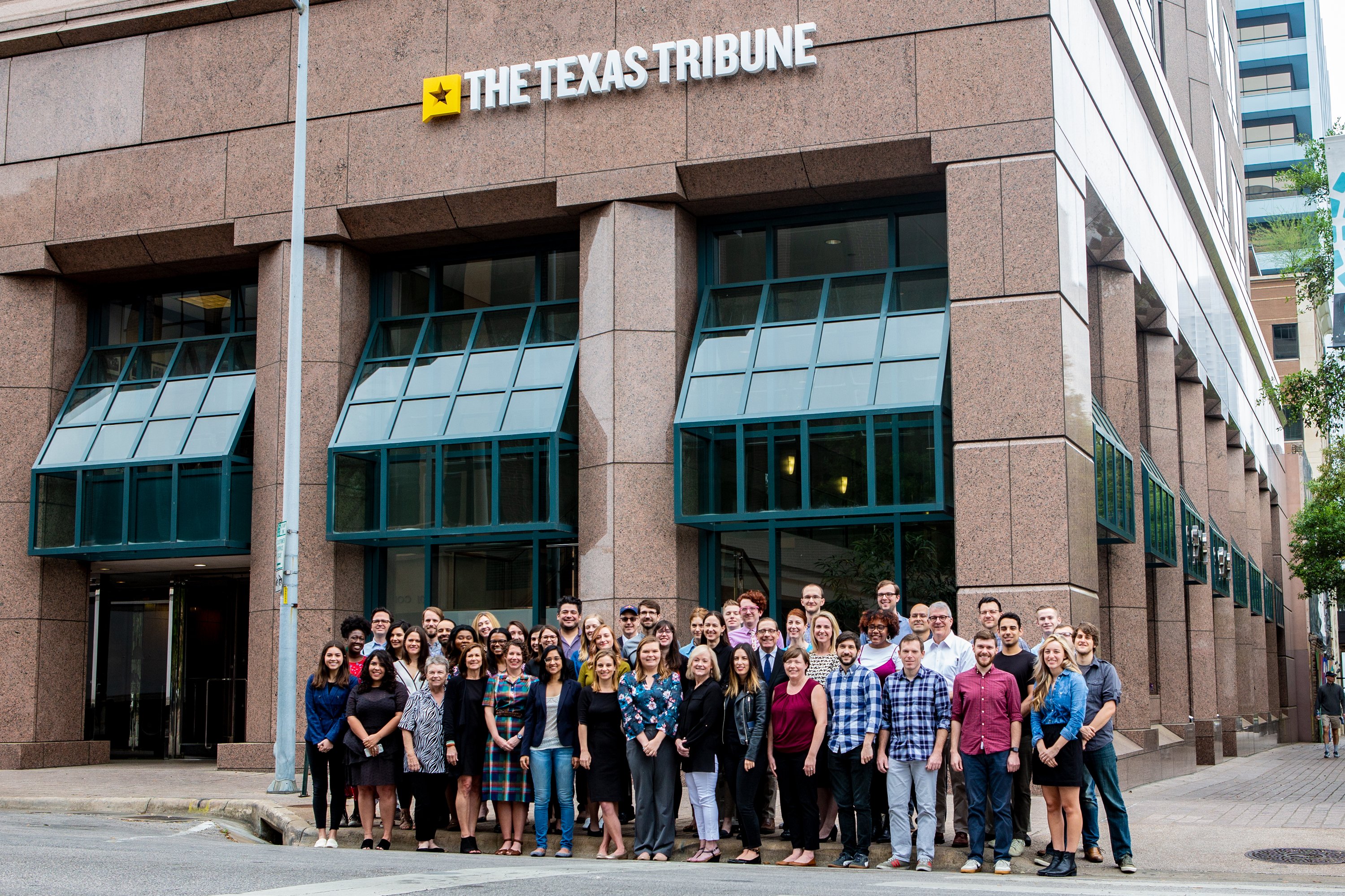
Members of the Texas Tribune staff on April 2, 2018. Photo by Steve Moakley for
The Texas Tribune’s strategic plan is the result of nine months of research, introspection, collaboration and prioritization, and every single member of our staff contributed to it.
It was written by Becca Aaronson, Liam Andrew, Aman Batheja, Bobby Blanchard, Erin Boon, Natalie Choate, Daniel Craigmile, Rodney Gibbs, April Hinkle, Corrie MacLaggan, Ayan Mittra, Ryan Murphy, Terry Quinn, Emily Ramshaw, Debbie Seeger, Evan Smith, Morgan Smith, Alexa Ura, Agnes Varnum, Jacob Villanueva, Matthew Watkins, Todd Wiseman and Amanda Zamora. Emily Yount Swelgin designed this visual presentation, Emily Albracht and Ben Hasson created the illustrations and Darla Cameron created the graphics.
Texas Tribune board members Rosental Alves, Trei Brundrett, Tracy LaQuey Parker, Steve Sachs, Jim Schachter, Suzi Sosa and John Thornton provided crucial guidance, and their board colleagues offered expert feedback.
Special thanks to the following friends of the Tribune for their advice, candor and big brains: Josh Baer, Justin Bank, Pamela Behrsin, Josh Benton, Larry Birnbaum, Robert Bole, R.B. Brenner, Alastair Coote, Deirdre Delisi, Sam Dolnick, David Dudley, Nicole Flatow, Sam Ford, Hugh Forrest, Jim Friedlich, Lauren Fuhrmann, Debra Gillham, Spencer Ingram, Gerardo Interiano, Josh Jones-Dilworth, Mini Kahlon, Mike Kanin, Sasha Koren, Dave Levinthal, Tristan Looper, Richard Marcus, Enrique Marquez, Lynn Meredith, Rebekah Monson, Steve Mulder, Brian Muller, Ellen Osborne Ray, Erika Owens, Marcia Parker, Lauren Rabaino, Sam Rosen, Jenifer Sarver, Fran Scarlett, Adam Schweigert, Eugene Sepulveda, Jessica Shortall, Cally Stolbach Baute, Talia Stroud, Jayme Swain, Richard Tofel, Kendra Tucker, Shawn Van Every, Matt Waite, Amanda Wilkins, Kinsey Wilson and Ethan Zuckerman.
This report was informed in part by research on and interviews with the following news organizations, foundations and tech leaders: Ahora Si, Atlantic, Axios, CALmatters, CityLab, Dallas Morning News, Guardian, Knight/Mozilla OpenNews, New York Times, NPR, PBS, Politico, ProPublica, Quartz, Slack, Spotify, Texas Observer, Vox, Whereby.us, the Wisconsin Center for Investigative Journalism and WNYC.
Have a question about this strategic plan?
